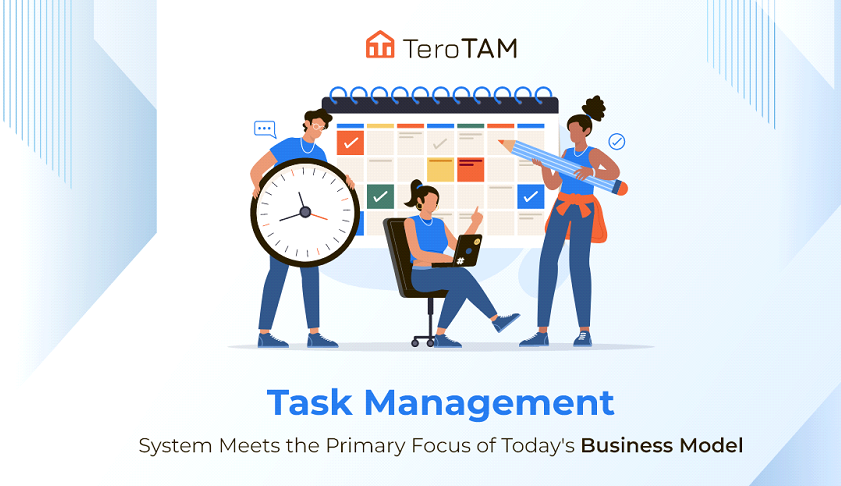Integrating task and project management software with other business tools helps teams work better together by keeping everything in one place. With this software, you can track tasks, manage deadlines, and organize responsibilities without jumping between different apps. Whether it’s syncing emails, connecting files, or sharing project updates, integrating task management software makes it easier to stay on top of work and collaborate efficiently. In this article we will learn how integrating task and project management software with other business tools will benefit you.
What is task management software?
Task management software is a tool that helps individuals and teams keep track of their tasks from start to finish. It allows users to organize, prioritize, and plan their tasks efficiently. With this software, teams can set goals, assign responsibilities, and monitor progress to ensure that projects move forward smoothly.
Each task is treated as a small piece of work that contributes to a larger goal, and team members can see what they need to do and when it needs to be done. By using task management software, teams can work together better, stay organized, and meet their project deadlines.
How integrating Task Management Systems with Other Business Tools Helps Businesses
Task management software has become an essential tool for businesses to stay organized and productive. However, when this software integrates with other tools that businesses use daily, it creates even greater efficiency. Integrating task management systems with tools like email, file storage, messaging, and project management platforms simplifies workflows and makes collaboration easier. Below, we will explore how these integrations can help businesses work smarter.
Integration with Gmail
By integrating task management software with Gmail, businesses can easily create and track tasks directly from their email inboxes. This ensures that important tasks connected to emails are not missed. The task management system automatically syncs with Gmail, allowing users to search for tasks and even complete them without leaving their inbox. This integration saves time and keeps email-related tasks organized and easy to follow.
Integration with Google Drive
Google Drive is widely used for storing and sharing files, and its integration with task management systems makes collaboration much easier. Users can link files from Google Drive to specific tasks, ensuring that everyone has the information they need in one place. This integration allows teams to access files quickly, make updates, and track changes without jumping between platforms, improving project accuracy and teamwork.
Integration with Outlook Email
Outlook Email integration enables businesses to turn emails into actionable tasks. Emails can be converted into tasks with file attachments, ensuring that no important action items are overlooked. This integration also supports automated workflows, where task updates and email notifications are sent to keep everyone informed without manual effort. This helps streamline communication and task follow-ups.
Integration with Dropbox
Dropbox integration allows businesses to easily manage files related to their tasks. Users can attach Dropbox files to tasks, making it simple to access important documents while working. As files are updated in Dropbox, those changes are automatically reflected in the task management software, preventing confusion. Teams can automate the process of uploading task files to specific Dropbox folders, making collaboration faster and more secure.
Integration with Slack
Slack is a popular messaging platform, and its integration with task management software ensures that conversations turn into actionable items. Teams can create tasks from Slack messages, assign them to the right person, and set deadlines. This keeps communication organized and ensures that nothing important is lost in chats. Additionally, Slack integration provides updates on task progress, keeping the team aligned on project developments.
Integration with Microsoft Teams
Microsoft Teams integration enables businesses to create, track, and manage tasks directly from their Teams conversations. This helps teams stay on top of their work without switching between apps. Task management updates, such as project progress and task completions, are also sent directly to Teams, ensuring visibility across the team. This integration allows for seamless collaboration and easy monitoring of ongoing projects.
Integration with Jira Cloud
For businesses that rely on Jira Cloud for project management, integrating it with task management software allows smooth collaboration between technical and non-technical teams. This two-way sync ensures that tasks created in the task management system automatically update in Jira and vice versa. It keeps everyone informed and aligned, regardless of the platform they are using, making cross-functional teamwork more effective.
Integration with Clockwise
Clockwise is a tool that optimizes work schedules, and when integrated with task management software, it ensures that tasks are scheduled during Focus Time. This integration helps employees block out time to complete tasks without distractions. Task blocks can be added to calendars, giving teams more control over their day-to-day planning and improving productivity.
Conclusion
Integrating task and project management software with other business tools creates a unified workspace that boosts productivity and teamwork. By connecting systems like email, file storage, and messaging platforms, task and project management software simplifies how teams collaborate and manage tasks. It eliminates the need to switch between apps, ensuring that all important tasks, files, and communications stay organized in one place. This integration helps businesses stay focused, streamline their workflows, and complete projects more efficiently, making it a valuable solution for improving daily operations.



